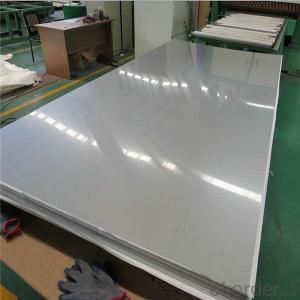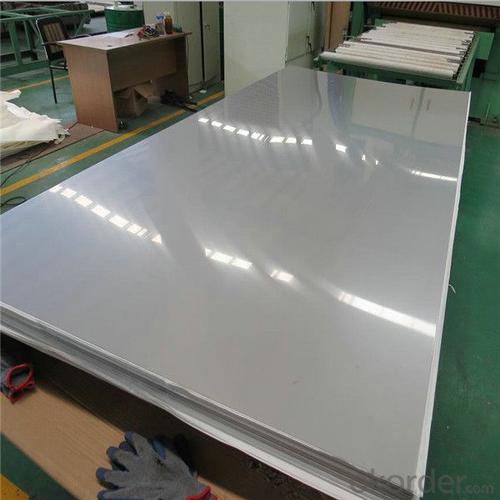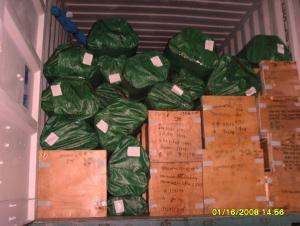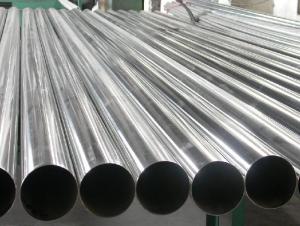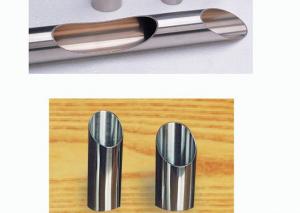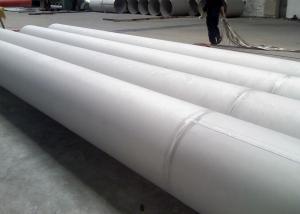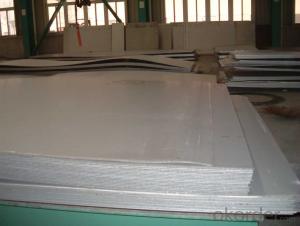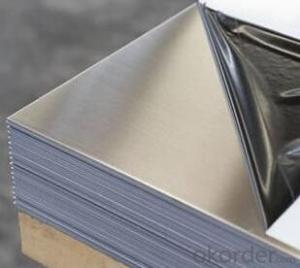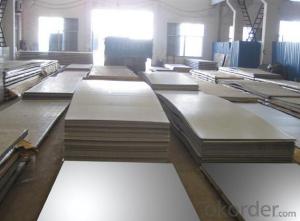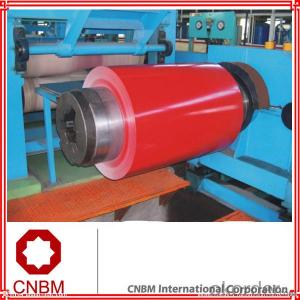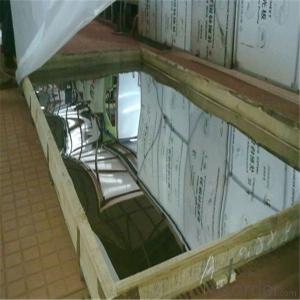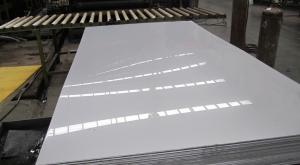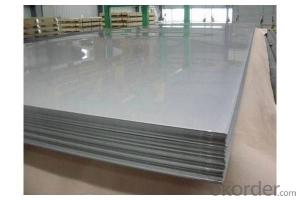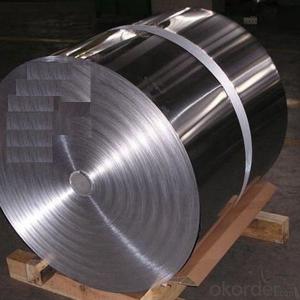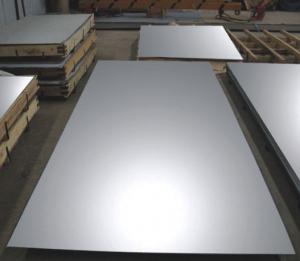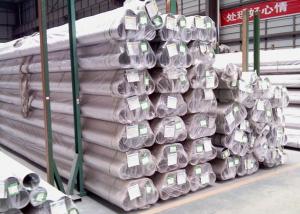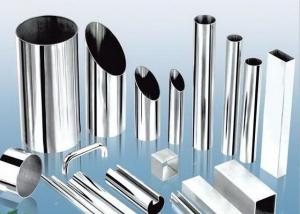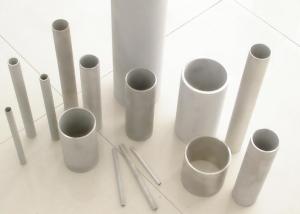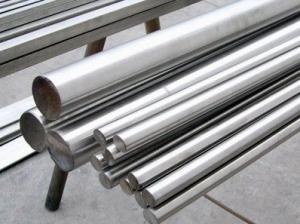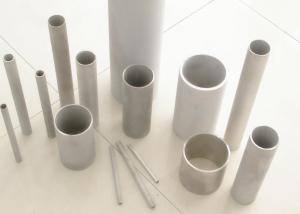Stainless 304 Plate Steel China Manufacturer Price
- Loading Port:
- Shanghai
- Payment Terms:
- TT OR LC
- Min Order Qty:
- 2 m.t.
- Supply Capability:
- 30000 m.t./month
OKorder Service Pledge
OKorder Financial Service
You Might Also Like
Specification
Product Description
1)Name: Non-magnetic 304 / 316 / 321 / 309S Stainless Steel Sheet
2)Grade:304, 304L, 316, 316L, 317L, 309S, 310S, 321, 347H
3)Size:thickness:0.3-30mm
4)Width:1000/1219/1500/1800/2000mm
5)length:2000/2500/3000/6000mm Special size can be customized
6)Finish:2B,Matt, 2D, HL, 8K, No.1-No.4
7)Standard:ASTM, GB,JIS, DIN, EN
8)Special steel can be provided according to customer's requirements
9)Packing: standard export package or according to customer's request


Our Services
Specifications:
Type | stainless 304 plate steel |
Thinckness | Cold rolled: 0.15mm-10mm Hot rolled: 3.0mm-180mm |
Width | 8-3000mm stainless 304 plate steel |
Length | 1000mm-11000mm or as customer' s requirement |
Finish | 2B, BA, HL, MIRROR, NO. 1-NO. 4, 8K, and so on. |
Standard | ASME, ASTM, EN, BS, GB, DIN, JIS etc |
Material | stainless 304 plate steel 300series:303,304,304L,309,309s,310,310S,316,316L,316Ti,317L,321,347 200series:201,202,202cu,204 400series:409,409L,410,420,430,431,439,440,441,444 Others:2205,2507,2906,330,660,630,631,17-4ph,17-7ph, S318039 904L,etc Duplex stainless steel:S22053,S25073,S22253,S31803,S32205,S32304 Special Stainless Steel:904L,347/347H,317/317L,316Ti,254Mo |
Application range | Escalator, Elevator, Doors Furniture Production tools, Kitchen appliances, freezers, cold rooms Auto Parts Machinery and Packaging Equipment and Medical devices Transport system |
Packaging & Shipping
Stainless 304 plate steel Packing
| Packaging | 1.Interlayer paper 2.Waterproof paper 3.PVC Cloth |
| 4.Inner And Outer Protective Ring 5. Steel Belt | |
| 7.Wooden pallet 8.wooden Box Or As Requirement | |
| Shipping | 3-20 Days After Receiving The Deposit By T/T Or L/C |
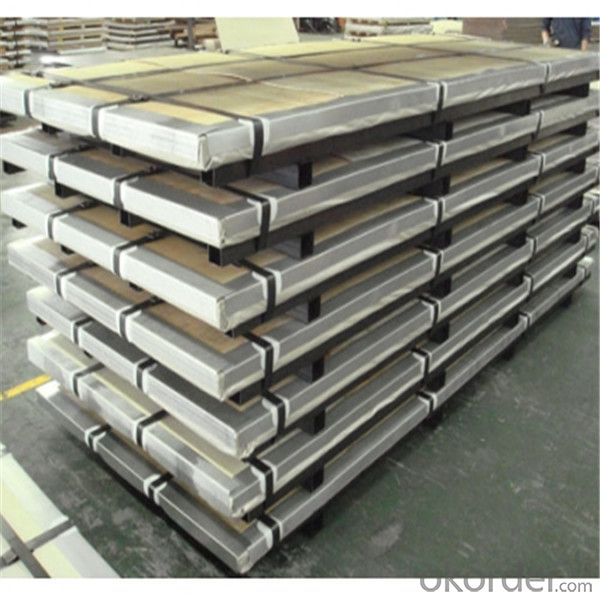
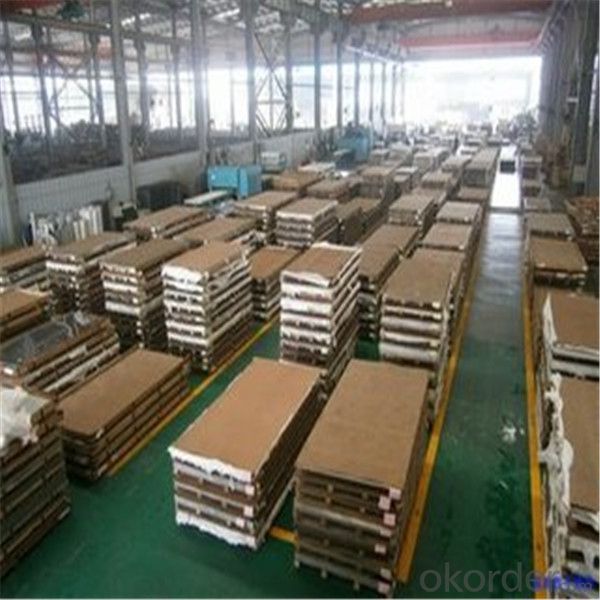
FAQ
Q1 : Are you factory or trader?
A: We are trading company who starting export business since 2008,
and specilized in 300 / 400 series stainless steel for nearly 20 years.
We are SGS audits company and 8 year Alibaba Gold Member, also
we are Trade Assurance company.
Q2 : Can you provide mill test certification ?
A: YES! Mill Test Certificate for both hot rolled raw material coils
and cold rolled coils are available.
Q3 : How to get the sample?
A: FREE samples are available for your checking and testing.
And to get free samples, you need tosend us you detailed receiving
address (including post code) and your DHL/FedEx/UPS account for
collecting samples, courier cost will be paid in your side.
Q4 : How to make sure the quality of the products?
A: The products is all produced by famous manufactory in China,
the quality is good, we can provide the Mill Test Certifiated to the
you. We also accept do SGS and other Third Party Inspection of quality test before the shipment.
Q5 : What's your deliver times?
A: Normal size have new and fresh stocks. The deliver time is usually
5-10 days for goods in stock. For the unstandard size products or large
quantity, goods , the deliver time will be 15-30 days after receiving the
deposit of T/T.
- Q: How do I prevent crevice corrosion on stainless steel sheets?
- To prevent crevice corrosion on stainless steel sheets, it is important to keep them clean and free from contaminants. Regularly cleaning the sheets with a mild detergent and water, followed by thorough drying, can help remove any corrosive agents. Additionally, ensuring proper ventilation and avoiding prolonged exposure to high humidity or stagnant conditions can minimize the risk of crevice corrosion. Applying a protective coating or using corrosion inhibitors specifically designed for stainless steel can provide an extra layer of protection against crevice corrosion.
- Q: Are stainless steel sheets good for cryogenic storage?
- Yes, stainless steel sheets are suitable for cryogenic storage due to their excellent resistance to low temperatures and high strength. They can withstand extreme cold without becoming brittle or losing structural integrity, making them a reliable choice for storing materials at cryogenic temperatures.
- Q: What is the specific heat capacity of stainless steel sheets?
- The specific heat capacity of stainless steel sheets can vary depending on the specific grade and composition of the stainless steel. However, on average, the specific heat capacity of stainless steel is around 500 J/kg°C. This means that for every kilogram of stainless steel, it would require 500 joules of energy to raise the temperature by 1 degree Celsius. It is important to note that this value may not be exact for all types of stainless steel, so it is recommended to consult specific technical data or reference materials for accurate and precise values.
- Q: Are stainless steel sheets available in different finishes?
- Yes, stainless steel sheets are available in different finishes. Stainless steel is a versatile material that can be finished in various ways to achieve different appearances and textures. Some common finishes include brushed, mirror, satin, and textured finishes. Each finish has its unique aesthetic appeal and can be chosen based on the desired look and application requirements. The choice of finish can also impact the stainless steel sheets' resistance to corrosion, staining, and scratching. Therefore, manufacturers offer a variety of finishes to cater to different customer preferences and specific project needs.
- Q: What are the different types of stainless steel sheet finishes for food processing applications?
- There are several different types of stainless steel sheet finishes that are commonly used in food processing applications. 1. No. 1 Finish: This finish is achieved by hot rolling the stainless steel sheet and leaving it with a rough surface. It is not typically used in food processing applications as it is not smooth enough and can harbor bacteria. 2. No. 2B Finish: This is a smooth, reflective finish that is achieved by cold rolling the stainless steel sheet and then annealing it. It is commonly used in food processing applications as it is easy to clean and maintain. 3. No. 4 Finish: This finish has a brushed appearance and is achieved by using abrasive materials to create a uniform grain on the surface. It is often used in food processing applications where a decorative or aesthetic finish is desired. 4. No. 8 Mirror Finish: This is the most reflective finish available for stainless steel sheets. It is achieved by polishing the surface until it is highly reflective and mirror-like. This finish is often used in food processing applications where a high level of cleanliness and hygiene is required. In addition to these finishes, there are also specialized finishes such as bead blasted, patterned, and embossed finishes that can be used in food processing applications to achieve specific aesthetic or functional requirements. Ultimately, the choice of finish will depend on the specific needs of the food processing application, including factors such as hygiene, ease of cleaning, and aesthetic considerations.
- Q: What do stainless steel 304 industrial surfaces refer to?
- Acid washing: pickling is the removal of oxide and rust on the surface of iron and steel by means of acid solutions. The parts are usually immersed in aqueous solutions such as sulfuric acid to remove oxides such as oxides on the metal surface. It is the pretreatment or intermediate treatment of electroplating, enamel and rolling etc..
- Q: Are stainless steel sheets suitable for food storage containers?
- Yes, stainless steel sheets are suitable for food storage containers. Stainless steel is a popular choice for food storage containers due to its many beneficial properties. Firstly, stainless steel is non-reactive, meaning it does not interact with or leach any harmful chemicals into the food, ensuring that the taste and quality of the food is preserved. Additionally, stainless steel is resistant to corrosion, rust, and staining, making it a durable and long-lasting material for food storage containers. It is also easy to clean and maintain, as it does not absorb odors or flavors from previous food items. Furthermore, stainless steel is a hygienic material, as it does not harbor bacteria or other pathogens, ensuring that your food remains safe and healthy. Overall, stainless steel sheets are an excellent choice for food storage containers due to their suitability for contact with food, durability, and hygienic properties.
- Q: Are stainless steel sheets resistant to alkaline solutions?
- Yes, stainless steel sheets are generally resistant to alkaline solutions.
- Q: How do you prevent discoloration or staining on stainless steel sheets?
- To prevent discoloration or staining on stainless steel sheets, it is important to clean them regularly using mild soap or detergent and water. Avoid using abrasive cleaners or scrub brushes that can scratch the surface. Additionally, wipe down the sheets with a soft cloth to remove any fingerprints or smudges. Applying a thin layer of stainless steel cleaner or polish can help maintain the shine and protect against stains. It is also recommended to avoid exposure to harsh chemicals or acidic substances, as they can cause discoloration.
- Q: Can stainless steel plate spray paint?
- Basic treatment, in the future, the film can not be solid, the first process is to first clean the stainless steel surface. The treatment method can use the tool to root out the original paint, and also use sandpaper to polish the surface. It is better to use sand blasting to make the surface clean after roughening, and to increase the adhesion area of the primer.
Send your message to us
Stainless 304 Plate Steel China Manufacturer Price
- Loading Port:
- Shanghai
- Payment Terms:
- TT OR LC
- Min Order Qty:
- 2 m.t.
- Supply Capability:
- 30000 m.t./month
OKorder Service Pledge
OKorder Financial Service
Similar products
Hot products
Hot Searches
Related keywords
